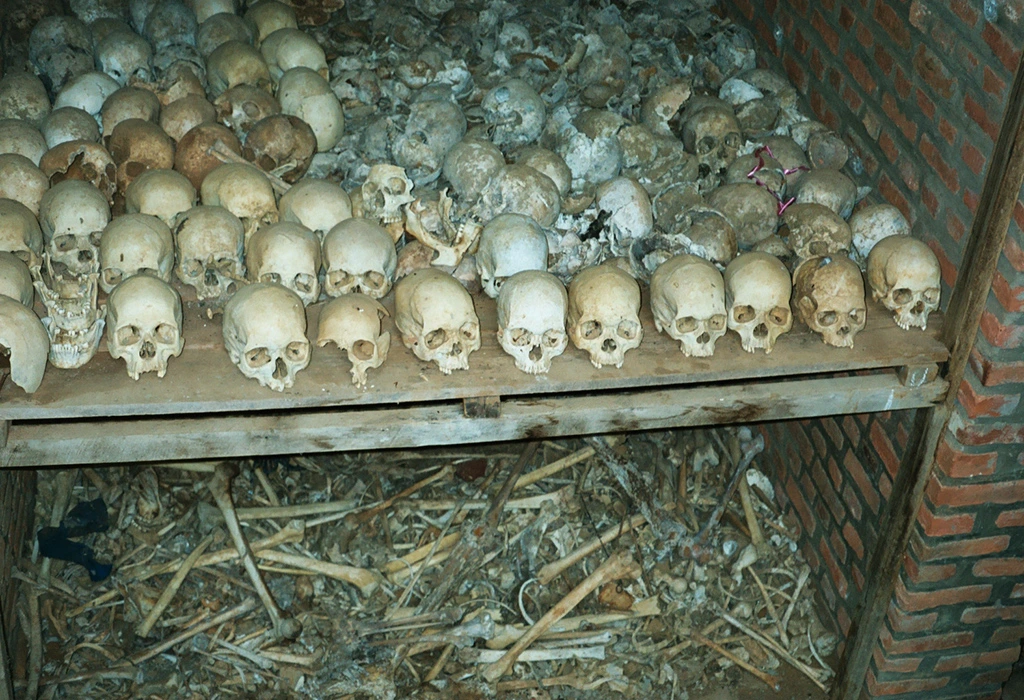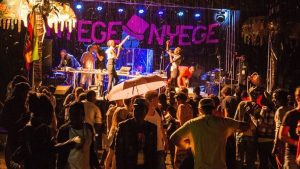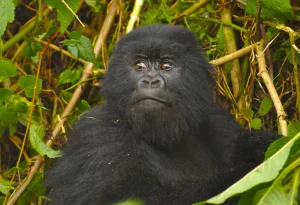The Nyamata Genocide Memorial stands as one of the most harrowing reminders of the 1994 Rwandan Genocide. Situated in the Bugesera District, about 30 kilometers south of Kigali, the memorial starkly testifies to the brutality that claimed the lives of over 800,000 people in just 100 days. The site, once a Catholic church, witnessed the massacre of nearly 10,000 Tutsi men, women, and children who sought sanctuary within its walls. Today, it functions not only as a burial ground but also as a center for education, remembrance, and healing.
What is the Nyamata Genocide Memorial, and Why is it Significant?
The Nyamata Genocide Memorial preserves the memory of atrocities committed during the 1994 Rwandan Genocide against the Tutsi population. Unlike typical war memorials, Nyamata uniquely captures how a place of worship became a site of unimaginable horror. Religious institutions, once seen as sanctuaries, often turned into death traps. At Nyamata, thousands gathered in the church, believing they would find safety. Instead, militia forces used grenades, machetes, and rifles to massacre them. Today, the Rwandan government and the National Commission for the Fight Against Genocide (CNLG) maintain the site, which UNESCO added to its World Heritage List in 2023.
What Events Transpired at Nyamata Church During the 1994 Genocide?
In early April 1994, after President Juvénal Habyarimana’s assassination, the genocide began with targeted killings of Tutsi and moderate Hutu. As violence escalated, thousands of Tutsi from Bugesera District fled to Nyamata Church, hoping to find refuge. On April 10, Interahamwe militia and government soldiers surrounded the church and launched a brutal assault. They used grenades to break the doors open, then killed the people inside with machetes and firearms.
The attackers showed no mercy. They murdered infants, raped women, and mutilated bodies. The blood-stained walls, bullet holes, and preserved clothing remain at the site, bearing witness to the atrocity. The story of Nyamata remains one of the most tragic and powerful narratives of the Rwandan Genocide.
How Many Victims Does the Nyamata Genocide Memorial Commemorate?
Although about 10,000 people died inside the church, the memorial honors over 50,000 victims from the surrounding areas. Behind the church, mass graves hold thousands of remains. These graves represent more than numbers—they signify lives lost and families shattered. The memorial extends beyond the church, encompassing the wider tragedy that unfolded in the region. Crypts and human remains, respectfully stored, give visitors a somber understanding of the massacre’s scale.
What Can Visitors Expect When Touring the Nyamata Genocide Memorial?
Visiting Nyamata offers an emotionally intense and transformative experience. The church remains largely untouched since 1994. Blood-stained clothing covers the pews. Display cases hold identity cards, rosaries, and other personal belongings that humanize the victims. Underground crypts store skulls and bones in a respectful manner.
Guides—often genocide survivors themselves—lead tours and provide personal stories and historical context. Some recount their own harrowing experiences. Outside, visitors walk through the peaceful grounds, where silence and solemnity encourage reflection. This blend of raw history and quiet reverence creates a powerful educational and emotional journey.
What Guidelines or Restrictions Should Visitors Follow?
Visitors should follow specific guidelines to respect the victims and the memorial:
- Photography: You cannot take photos inside the church unless you get permission from the CNLG.
- Attire: Dress modestly to show respect.
- Behavior: Remain silent in certain areas and avoid loud conversations or disrespectful actions.
- Donations: Entrance is free, but donations help maintain the site and support survivor programs.
These rules help maintain the dignity of the memorial and ensure visitors reflect appropriately on what they witness.
Does the Memorial Charge an Entrance Fee?
No, the memorial does not charge an entrance fee. However, visitors can make voluntary donations. These contributions help maintain the site, train staff, and support survivor assistance and educational efforts. Many visitors donate as a gesture of solidarity and support for ongoing remembrance efforts.
What Exhibits Does the Nyamata Genocide Memorial Feature?
The exhibits at the memorial leave a lasting impression:
- Victims’ Clothing: Blood-stained garments arranged on benches and pews illustrate the massacre’s brutality.
- Personal Belongings: Items like notebooks, rosaries, and wedding rings offer glimpses into the victims’ lives.
- Structural Damage: Bullet holes and grenade damage remain visible throughout the church.
- Underground Crypts: These respectfully house the skulls and bones of the victims.
These exhibits aim to educate and evoke empathy rather than shock. They challenge visitors to confront the horror of genocide and reflect on the importance of preventing such atrocities.
What Special Commemorations Take Place at the Memorial?
Every April 11, the Nyamata Genocide Memorial holds commemorative events as part of Rwanda’s Kwibuka remembrance week. During April 7–14, Rwandans across the country honor genocide victims.
At Nyamata, the ceremonies include:
- Wreath Laying: Dignitaries, survivors, and visitors place flowers at the mass graves.
- Moments of Silence: Attendees pause to remember the victims.
- Survivor Testimonies: Survivors share personal stories of resilience and healing.
- Educational Activities: Panel discussions, school visits, and documentaries help spread awareness.
These events not only honor the victims but also reinforce Rwanda’s commitment to unity, healing, and peace.
How Does the Memorial Support Education and Remembrance?
The Nyamata Genocide Memorial plays a central role in Rwanda’s efforts to build a peaceful future. It provides multiple educational opportunities:
- Public Education: The site educates locals and tourists on genocide causes, consequences, and prevention.
- School Programs: Students visit the memorial as part of civic education.
- Research and Archives: CNLG collects survivor testimonies and preserves forensic evidence.
- Workshops: The memorial hosts discussions on human rights, peace-building, and reconciliation.
These educational efforts create awareness, foster empathy, and help prevent future atrocities.
Why Did UNESCO Designate the Memorial a World Heritage Site?
In 2023, UNESCO added the Nyamata Genocide Memorial—along with Murambi, Gisozi, and Bisesero—to the World Heritage List. This recognition highlights the site’s global importance as a space of memory, reflection, and education.
UNESCO designation provides several benefits:
- Global Recognition: The world acknowledges Rwanda’s efforts in genocide remembrance.
- Funding and Support: UNESCO offers financial and technical resources for preservation.
- Cultural Significance: The memorial gains status as a heritage site for all humanity.
This designation places Nyamata alongside other globally significant remembrance sites like Auschwitz and Hiroshima.
Why Should You Visit the Nyamata Genocide Memorial?
Visiting the Nyamata Genocide Memorial offers more than a history lesson—it’s a moral journey. The experience pushes you to face uncomfortable truths and recognize the human cost of hatred and division. Here’s why your visit matters:
- Pay Your Respects: Honor the victims and preserve their stories.
- Learn and Understand: Educate yourself about the genocide’s root causes and lasting effects.
- Support Healing: Offer solidarity and compassion to survivors.
- Inspire Action: Leave with a deeper commitment to justice and human rights.
The memorial doesn’t just tell a story of death—it inspires remembrance, resilience, and hope.
Conclusion
The Nyamata Genocide Memorial reminds us where memory, history, and hope intersect. It warns us against indifference, educates us about humanity’s darkest moments, and offers space for grief and healing. When you visit or learn about Nyamata, you contribute to a global culture of remembrance and prevention. We must remember so history doesn’t repeat itself.
Whether you plan a visit or seek to educate yourself about one of the darkest chapters in human history, you’ll find the Nyamata Genocide Memorial a powerful resource and a vital landmark in the global fight for justice and peace.




